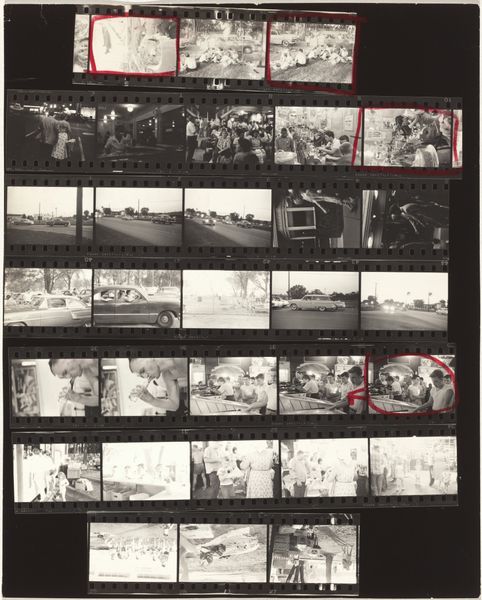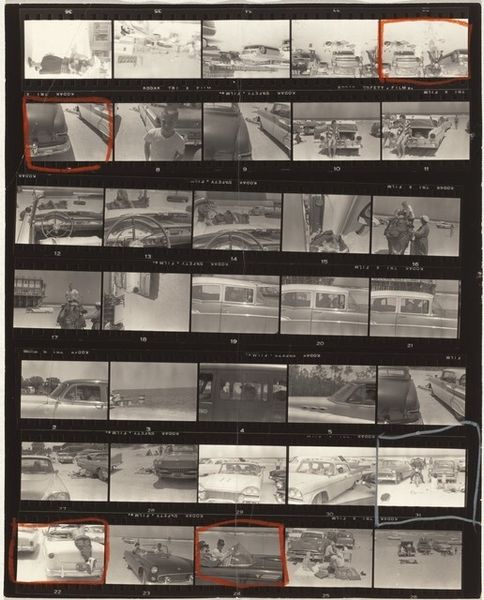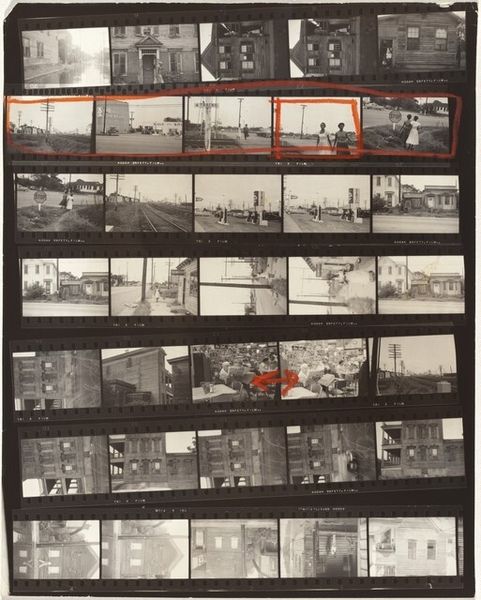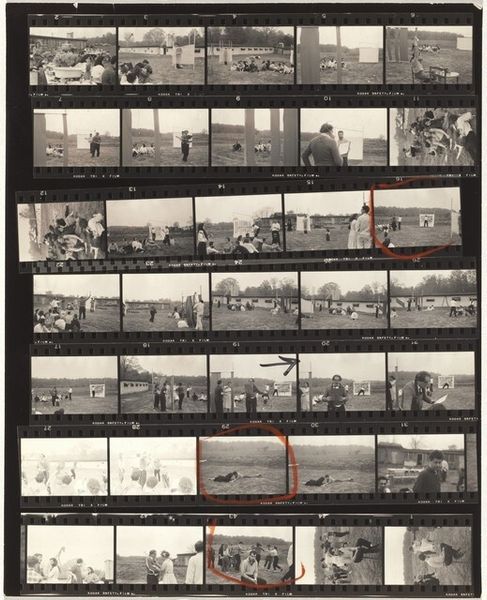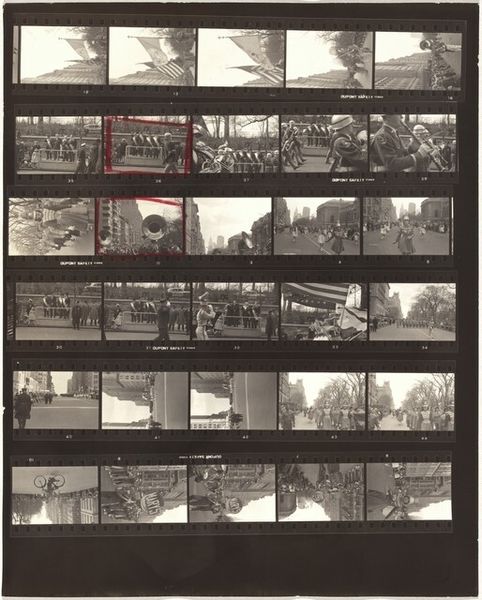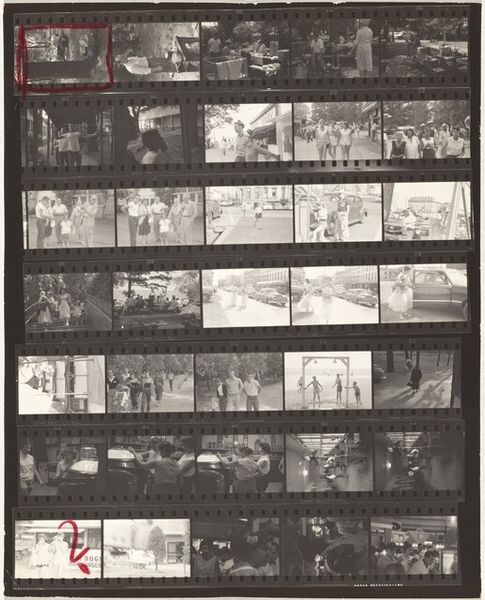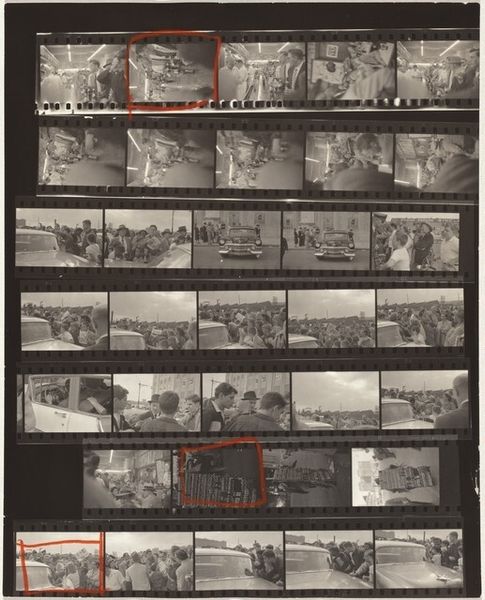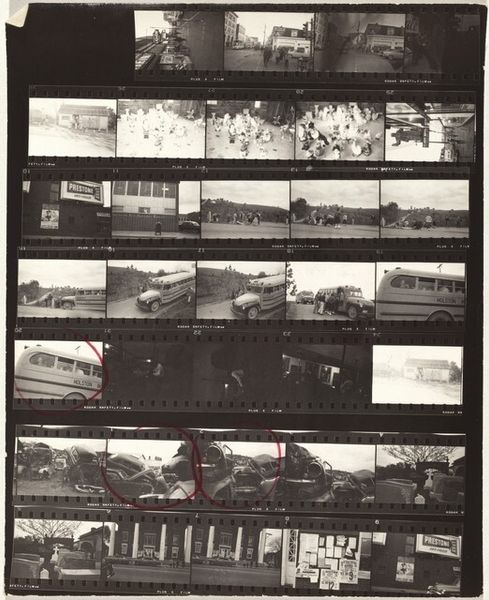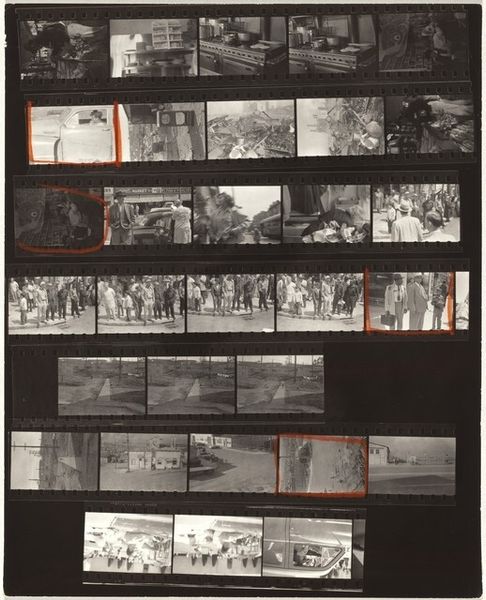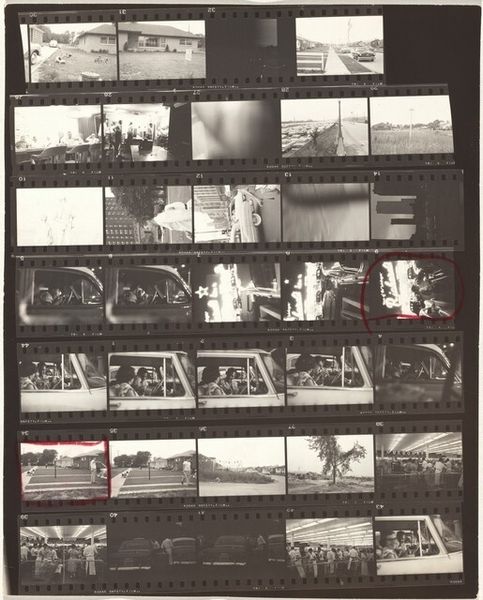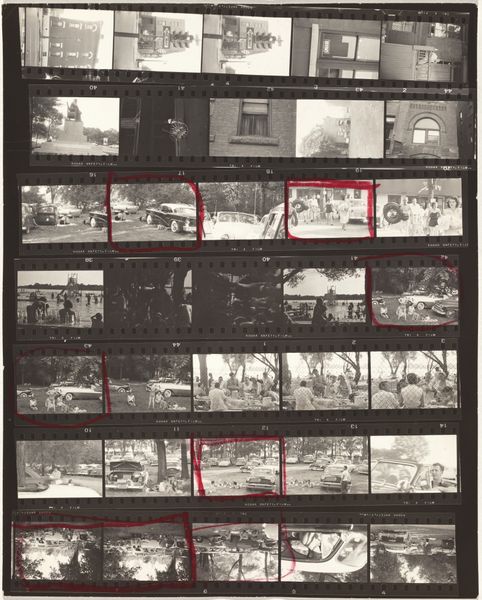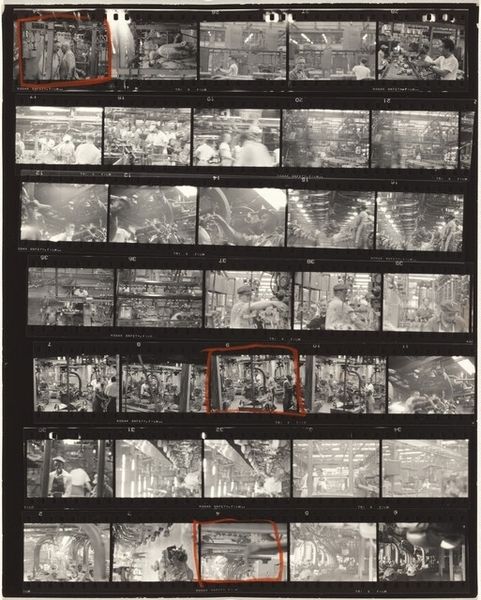
Dimensions: sheet: 25.3 x 20.3 cm (9 15/16 x 8 in.)
Copyright: National Gallery of Art: CC0 1.0
Editor: This is a fascinating piece, "J.L.A. VII" by Robert Frank, from the mid to late 1950s. It's a gelatin-silver print, and seeing the whole contact sheet like this gives such a different impression than just seeing one image. It makes me think about the process of photography so much more. What’s your take? Curator: What strikes me is the physical artifact itself - this strip of film. We see the means of production laid bare. It invites questions about Frank's selection process: Which frames were deemed 'keepers'? And, materially, what does the degradation of the silver gelatin print itself signify over time? Editor: So, beyond the content of the images, you’re drawn to the film strip as an object, like a piece of industrial material, itself shaped by the photographic process? Curator: Precisely. The emulsion, the grain, the sprocket holes - these aren't neutral elements. They dictate the aesthetic, enabling a certain gritty realism Frank became known for. We can even speculate on the social context embedded within the materials - the accessibility of Kodak film stock to a particular class or artistic group at that time, for example. What kind of social realities were being captured? Editor: It is interesting to think about access. Could anyone have captured these kinds of images? Did the means of production allow different kinds of images than those shot, say, with a large, expensive camera? Curator: Exactly. The ease of use democratized image-making to a certain extent. Consider how different this is compared to painted portraits that often served those with money and power. It offers a window into how new materials affected the possibilities for image creation and potentially what was considered worthy of being visually recorded. Editor: Thinking about it that way helps connect Frank's photographs to the larger currents in art history. It wasn't just about "capturing the moment", but the materiality allowed new viewpoints and subjects. Curator: Right! Analyzing this way takes us beyond surface appearances and into the economic, social and even physical foundations upon which artistic practices are built.
Comments
No comments
Be the first to comment and join the conversation on the ultimate creative platform.
